Monday, March 31, 2008
Don't let the Glaciers win!
Watch out for those glaciers!
Sunday, March 30, 2008
Discovery Of Oldest Known Traces Of Mineralization Caused By Micro-organisms
 ScienceDaily (Mar. 30, 2008) — An old controversy has finally been laid to rest. Stromatolites, cauliflower-shaped carbonate rocks that are found in abundance in geological formations, including ones that are several billion years old, show definite evidence of ancient biological activity. This has just been shown by researchers at the Institut de Physique du Globe in Paris (CNRS/Université Paris 7), thanks to detailed analysis of 2.7 billion-year-old rocks from cores drilled in Australia. Previously, the oldest known traces of mineralization caused by micro-organisms were only 350 million years old.
ScienceDaily (Mar. 30, 2008) — An old controversy has finally been laid to rest. Stromatolites, cauliflower-shaped carbonate rocks that are found in abundance in geological formations, including ones that are several billion years old, show definite evidence of ancient biological activity. This has just been shown by researchers at the Institut de Physique du Globe in Paris (CNRS/Université Paris 7), thanks to detailed analysis of 2.7 billion-year-old rocks from cores drilled in Australia. Previously, the oldest known traces of mineralization caused by micro-organisms were only 350 million years old.Until now, most scientists agreed that fossil stromatolites were connected with the activity of photosynthesizing micro-organisms, as is the case in present-day environments(1). This hypothesis was based on morphological criteria, which appeared to suffice for recent fossil rocks (several million years old) formed in environments similar to today’s. However, this was not the case for older stromatolites (2.5 to 4 billion years old), which developed under very different conditions and for which researchers have proposed (and tested numerically) models of mineral growth in the presence of water.
The researchers collected unaltered fossil stromatolites as part of a drilling project (the Pilbara Drilling Project(2)), funded by CNRS’s National Institute of Earth and Astronomical Sciences and the Institut de Physique du Globe, in the Tumbiana formation in Australia. By using a very high resolution characterization method (of around 10 nanometers), they were able to discover and analyze small globules of organic matter containing nanocrystals of aragonite. It is known that present-day bacteria cause the precipitation of aragonite, a very unstable polymorph of calcium carbonate which rapidly changes into calcite once the micro-organisms die. Thanks to these findings, researchers now have irrefutable proof of microbial mediation in the formation of ancient stromatolites.
From: Centre National De La Recherche Scientifique. "Discovery Of Oldest Known Traces Of Mineralization Caused By Micro-organisms." ScienceDaily 30 March 2008. 30 March 2008.Notes :
1) for instance, at Shark Bay, Australia
2) see the article Drilling the Outback (backstory), in the same issue of the journal Nature Géoscience, which describes the drilling expedition
Journal reference: Microbially influenced formation of 2,724-million-year-old stromatolites, Kevin Lepot, Karim Benzerara, Gordon E. Brown Jr and Pascal Philippot, Nature Geosciences, online publication 28 January 2008.
.
Paleo CafePress Stores
Society of Vertebrate Paleontology
The Ethical Palaeontologist (Julia’s store)
Trilobite Clothing! (some cool Trilobite gear)
FossilPrep.org gear
SkeletalDrawing.com (Scott’s store)
Galaxygoo
Rabbit & Crow (brilliant, wish I had thought of it).
Paleontology Rocks
Eat, Sleep, Paleontology
I’m the Paleontologist Your Mother Warned You About
The Kansas Fossil Store
DinoJim (one of my friends from Grad School)
And don’t forget mine

Saturday, March 29, 2008
Science Podcast
I typically enjoy listening to Podcast while I am working in the lab. Some of the ones I generally listen too include the Naked Scientist, Nature, NOVA ScienceNOW, NPR: Science Friday, Science Talk, the Onion Radio News, and I just subscribed to USGS CoreFacts today (saw that on someone's blog, just can't remember whose it was, sorry!).
So, what Podcast do you listen to. Can you recommend anything?
.
Friday, March 28, 2008
Fossil Friday
It appears that Fridays are all about Fossils here in the world of GeoBlogging. I had no idea, but it sounds like fun to me. Thanks to Silver Fox for the heads up! So, on short notice, I give you this:
A photo I took in Glacier National Park of Stromatolites has been published by the USGS! Check it out on the last page of "Lindsey, D.A., 2007, Precambrian Time—The Story of the Early Earth: U.S. Geological Survey Fact Sheet 2007-3004, 6 p." These stromatolites can seen if you hike the Highline Trail in the park. They are found within the Siyeh Formation (1.1 Ga) in the park, and are everywhere if you know what to look for. I could bore you with pictures for hours (just a small taste here), as they were one of the major focuses of my work in the park during the summer of 2005.

Another example of outsourcing
 ! Even Jay Leno made a crack about it Wednesday night:
! Even Jay Leno made a crack about it Wednesday night:"The White House is now outsourcing our passports overseas. Foreign companies are making our passports. See, this is smart thinking. Now, when we deport illegals, they can go home, make their own passports, and come back."
And again Thursday night:
"The White House is now outsourcing the manufacturing of our passports overseas. See, this is how a global economy works. See, when an illegal immigrant from Mexico living in LA and working in a Japanese-owned company wants to go home to visit his relatives, he uses a passport made in Thailand that he gets by calling a customer service number in India. You see how it works? This could be the thing that makes Lou Dobbs’ head explode."
How far off are we from having to call someone in Hong Kong to find out if a camp ground is full in one of our favorite National Parks? Or if you need a BLM or Forest Service permit filled and you have to call someone in India just to be transfered to the person in Denver you want to speak with in the first place. Just wait till they figure out a way to outsource all paleo/geo work to subcontractors in Turkmenistan, then they will not need any of us! Yea for CORE operations!

Thursday, March 27, 2008
First Meeting of the Southeastern Association of Vertebrate Paleontology

Tentative Meeting Agenda:
June 18 Evening Registration and Early Bird Mixer
June 19 Technical Sessions, Gray Fossil Site Tours
June 20 Technical Sessions, Gray Fossil Site Tours, Banquet
June 21 Field Trip to Appalachian Quaternary Sites (including caves and Saltville, VA)
For more information, contact
Blaine Schubert (schubert@etsu.edu)
Steven Wallace (wallaces@etsu.edu)
or visit www.etsu.edu/grayfossilsite/
Click here to register for the meeting.
Read more about the history of the Gray Fossil Site here!
.
What do you listen to while writing?
As I told him, I (unfortunately) can not have classical music (Mozart, Beethoven, ect…) on while I write, but my normal musical flair is also out because of the noise level. I tend to opt for movie soundtracks. The Fountain is a great one. My favorite motivational music is the Rudy soundtrack (goofy, I know). Others on high rotation on my playlist are the Lord of the Rings trilogy, Star Wars trilogy, Indiana Jones, Lawrence of Arabia, Braveheart, A River Runs Through It, Legends of the Fall, ect….things like that, and I tend to only use the music from calmer movie moments, no war-like music, just to keep the stress level down (its amazing how music can change your blood pressure and speed of typing).
Wednesday, March 26, 2008
The Art of Dan McCarthy
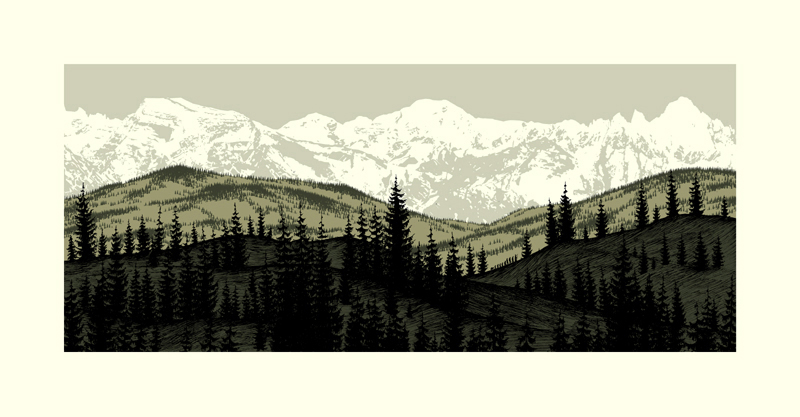
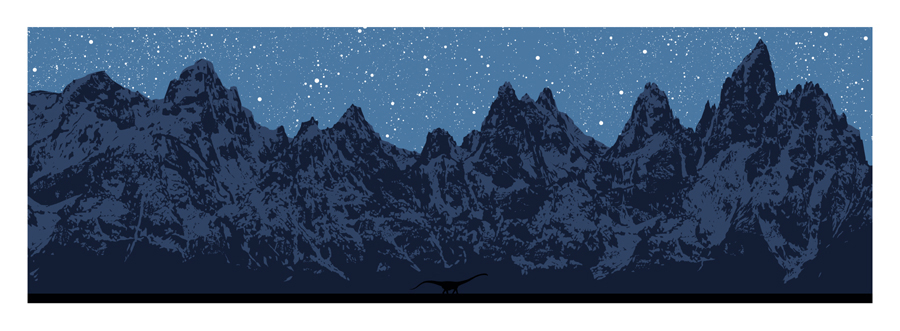
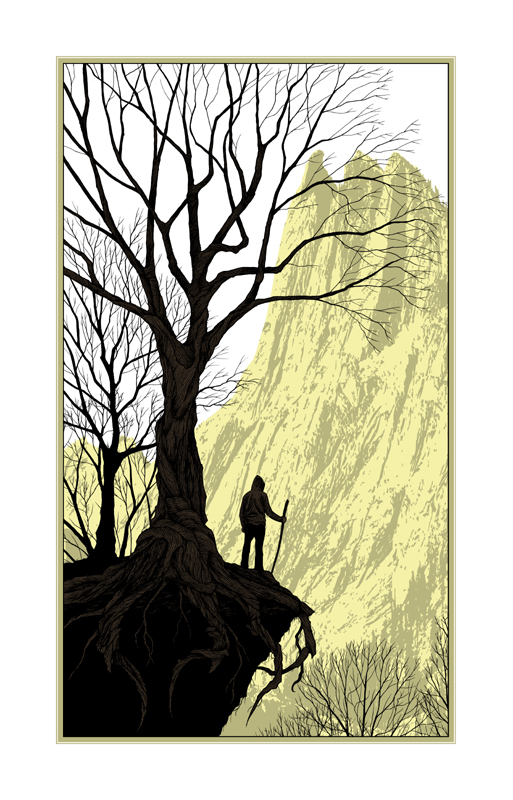
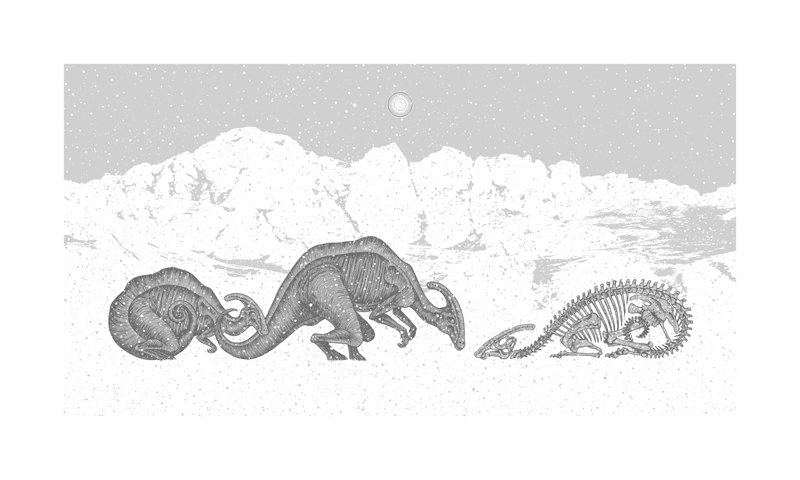

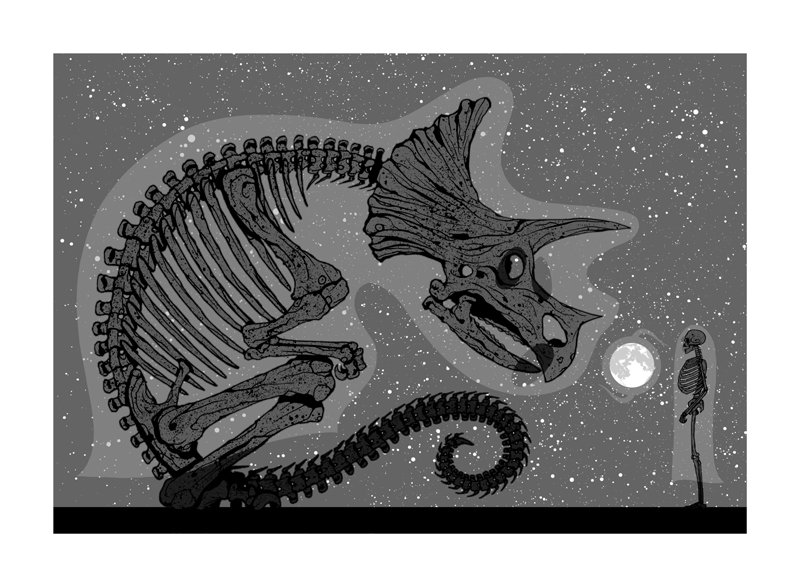
Tuesday, March 25, 2008
NOVA: Bone Diggers *updated*
 Updated)
Updated)"Bone Diggers" aired tonight (Tuesday, March 25) on NOVA at (8pm). According to my tv schedule it will be on again tomorrow (Wednesday, March 26, at 8am) and again on Thursday (March 27, 11pm).
I really enjoyed this program! I guess it originally aired last year, but it was during the field season, and I missed it. It was pretty cool to see some cave paleo in Australia taking place. Growing up in Oklahoma and Arkansas I often heard stories about bones in caves. My first 'dig' I ever went on was in a cave near Jasper, Arkansas. Dr. Leo Carson
 Davis took me out when I was probably 14 or 15 and let me work on a Pleistocene sinkhole deposit with him (Picture to the right - scary!). He had me working in a 6 foot deep hole, where he would lower a bucket to me to fill up. I still remember seeing a tiny rodent jaw in the wall of the hole. Very cool for my first dig! Once I got in school I got to know people like Blaine Schubert who had done some cave paleo in our area. But I regress.....
Davis took me out when I was probably 14 or 15 and let me work on a Pleistocene sinkhole deposit with him (Picture to the right - scary!). He had me working in a 6 foot deep hole, where he would lower a bucket to me to fill up. I still remember seeing a tiny rodent jaw in the wall of the hole. Very cool for my first dig! Once I got in school I got to know people like Blaine Schubert who had done some cave paleo in our area. But I regress.....I honestly do not know a huge amount about Australian fossils, but this was a pretty cool glimpse. In oder to learn more about this site, I took a chance and emailed Dr. John Long at Museum Victoria who the documentary follows. I was thrilled to have him respond in less than an hour to my email. He sent along a Nature article (Jan. 2007: "An arid-adapted middle Pleistocene vertebrate fauna from south-central Australia") on the finds for my further edification (upon my request). He also told me that Gavin Prideaux at Flinders University has taken over the project and has several papers on the Nullarbor caves fauna in the works. I am especially excited to see the new kangaroo paper! I hope to get these papers read soon and post something about them here.
A description of the show:
"NOVA takes viewers to the stark Australian outback in search of the elusive bones of one of the world's most bizarre prehistoric creatures—a giant predatory marsupial called Thylacoleo. Australia's leading paleontologists endure extreme weather, treacherous drops into a deep cavern, and the threat of fossil poachers as they launch a daring expedition to find the rare megabeast.
During the Ice Age a million or more years ago, Australia was home to a zoo of extraordinary giant animals, including eight-foot-tall kangaroos, wombats the size of hippos, snakes three feet in diameter, and a horned tortoise as big as a Volkswagen. (For a diorama-like gallery of some of these creatures, see Australia's Vanished Beasts.) But none was quite as bizarre or fearsome as Thylacoleo,  the meat-eating marsupial lion. Pound for pound, this creature had the most powerful bite of any mammal, living or extinct—in fact, its bite was equal to that of a much bigger African lion today. But even though it was the king of ancient Australian predators, Thylacoleo was eventually toppled from its throne, dying out along with all the rest of the outsized beasts. What happened to drive so many extraordinary megabeasts into oblivion?
the meat-eating marsupial lion. Pound for pound, this creature had the most powerful bite of any mammal, living or extinct—in fact, its bite was equal to that of a much bigger African lion today. But even though it was the king of ancient Australian predators, Thylacoleo was eventually toppled from its throne, dying out along with all the rest of the outsized beasts. What happened to drive so many extraordinary megabeasts into oblivion?
In "Bone Diggers," NOVA joins the Australian expedition to retrieve a rare intact skeleton of the meat-eating marsupial. The analysis of its bones throws new light on Thylacoleo's many peculiarities, notably the question of how it attacked its prey (see Anatomy of Thylacoleo). And, finally, the show digs into the mystery of what finally overwhelmed the giant Ice Age creatures and whether early human hunters were responsible.
The adventure begins when paleontologist John Long receives an e-mail from an amateur explorer with a tantalizing photo attached. The photo shows an apparently intact skeleton of Thylacoleo in the depths of a remote cave in the outback. Since no one has found a complete skeleton before, the discovery would be a paleontological milestone. So Long and his colleagues at the Western Australian Museum set out on an arduous expedition, crossing the desolate Nullarbor Plain to pinpoint the remote cave shown in the e-mail. Over the next three weeks, exploring the dangerous recesses of the ancient cavern, the team finds a remarkable trove of fossil remains—including several astonishingly well-preserved Thylacoleo skeletons together with previously unknown species of giant kangaroo.
Back in Perth, the team begins studying the bones and building up a picture of the marsupial lion's unique anatomy and behavior. Although most marsupials such as kangaroos and koalas are herbivores, Thylacoleo was something completely different—a fearsome predator with pincer-like front teeth and a slashing front claw on its thumb. Yet it wasn't built like a lion; with its low-slung body and short legs, it could never have chased its prey at high speed. Instead, it probably waited in ambush for its next meal, perhaps dropping from trees.
In the final scenes of "Bone Diggers," NOVA investigates the mystery of Thylacoleo's disappearance and that of all the other Australian giants. A fierce controversy turns on when exactly this continent-wide extinction occurred. The debate is split between advocates for a late date at the cold climax of the Ice Age some 30,000 years ago, when climate stresses would have been particularly severe. The competing camp claims the extinction was much earlier, around 50,000 years ago, when the climate was milder and the first humans arrived in Australia. While it's unlikely that humans could have directly over-hunted all the huge animals, Aboriginal hunters may well have set fires that gradually changed the profile of vegetation in the outback, making it harder for Thylacoleo's prey to get by. Although it was the king of beasts, Thylacoleo was probably vulnerable to shifts in the food chain. (For more on this mystery, see The Extinction Enigma.)
Whichever theory is correct, the riddle has implications that stretch beyond Australia. Creatures like woolly mammoths, mastodons, cave bears, giant sloths, and many other species all died out on other continents as the Ice Age ended and human populations expanded. The jury is out on just how big a role human predation played both in Australia and on the worldwide stage.
Read more about "Evolution Down Under"
pictures from: http://www.cosmosmagazine.com/node/990
http://www.knowyoursto.com/marsupialia/species/Thylacoleo-carnifex.html
http://www.pbs.org/wgbh/nova/bonediggers/about.html
New issue of JVP
The feature article this issue are some Egyptian bats from the late Eocene and early Oligocene. There are several 'fish' papers, a landshark...er...lamniform shark by Kenshu Shimada (Fins to the Left, Fins to the Right...), several reptile/amphibian/ish papers, a footprint paper, and several mammal(and -ish) papers. Hows that for vague. I am not sure what the rules are with JVP as far as posting the titles and exact details yet. If anyone out there does know, please feel free to fill me in.
As far as dinosaur papers go, there are two: one on tyrannosaurids and one on Triceratops. I am sure you can guess which one I am more interested in. Also worth mentioning, a note in this issue by my boss and Nate Smith on a tritylodont postcanine from the Hanson Formation in Antarctica can be found on pages 269-273. I prepared part of this specimen and was happy to see it get published (and felt nice to be acknowledged)! After I read these papers tonight I hope to discuss a few of them here, so keep your eyes peeled and feel free to jump in with any comments you might have (seriously, no one ever comments)!
Tibetan Plateau uplift occurred in stages
 Himalayan region remained below sea level while central region rose, geologists say
Himalayan region remained below sea level while central region rose, geologists say"SANTA CRUZ, CA--The vast Tibetan Plateau--the world's highest and largest plateau, bordered by the world's highest mountains--has long challenged geologists trying to understand how and when the region rose to such spectacular heights. New evidence from an eight-year study by U.S. and Chinese researchers indicates that the plateau rose in stages, with uplift occurring first in the central plateau and later in regions to the north and south.
"The middle part of the plateau was uplifted first at least 40 million years ago, while the Himalayan Range in the south and also the mountains to the north were uplifted significantly later," said Xixi Zhao, a research scientist at the University of California, Santa Cruz.
The team found marine fossils suggesting that the now lofty Himalayas remained below sea level at a time when the central plateau was already at or near its modern elevation, Zhao said. The average elevation of the plateau today is more than 4,500 meters (14,850 feet).
The researchers published their findings in the Proceedings of the National Academy of Sciences (online the week of March 24 and later in print)......
Known as "the roof of the world," the Tibetan Plateau was created by the ongoing collision of tectonic plates as India plows northward into Asia. Coauthor Robert Coe, a professor of Earth and planetary sciences at UCSC, said ideas about how the uplift of the plateau occurred have been evolving since well before his first visit to Tibet in 1988....
 The team of U.S. and Chinese geologists based their findings on extensive field studies conducted mostly in a remote interior region of the Tibetan Plateau. They focused on an area called the Hoh Xil Basin in the north-central part of the plateau. The area's geologic history is recorded in layers of sedimentary rock 5,000 meters thick. Now a part of the high plateau, it was once a basin on the northern edge of the central plateau, Lippert said.
The team of U.S. and Chinese geologists based their findings on extensive field studies conducted mostly in a remote interior region of the Tibetan Plateau. They focused on an area called the Hoh Xil Basin in the north-central part of the plateau. The area's geologic history is recorded in layers of sedimentary rock 5,000 meters thick. Now a part of the high plateau, it was once a basin on the northern edge of the central plateau, Lippert said."The structure of the basin and way the sediments were deposited show that it is the type of basin that forms at the base of large mountains. So we've shown that there was high topography to the south of the Hoh Xil Basin at least 40 million years ago," he said....
In the Himalayas, the team found fossils of marine plankton called radiolarians that turned out to be 5 million years younger than any previously discovered marine fossils from that area. The discovery narrows the window of time during which the Himalayas could have been uplifted. When the central part of the Tibetan plateau was uplifted more than 40 million years ago, Mount Everest and the rest of the Himalayas were still part of a deep ocean basin, Zhao said."........... Read the rest of the article here[link]
images from: http://visibleearth.nasa.gov/view_rec.php?id=5371
http://www.chinatouching.com/2007/10/22/pictures-of-the-qinghai-tibet-plateau-the-worlds-highest-plateau/
Monday, March 24, 2008
The Tuatara -- The Fastest Evolving Animal
 *ScienceDaily (Mar. 23, 2008) — "In a study of New Zealand's "living dinosaur" the tuatara, evolutionary biologist, and ancient DNA expert, Professor David Lambert and his team from the Allan Wilson Centre for Molecular Ecology and Evolution recovered DNA sequences from the bones of ancient tuatara, which are up to 8000 years old. They found that, although tuatara have remained largely physically unchanged over very long periods of evolution, they are evolving - at a DNA level - faster than any other animal yet examined."
*ScienceDaily (Mar. 23, 2008) — "In a study of New Zealand's "living dinosaur" the tuatara, evolutionary biologist, and ancient DNA expert, Professor David Lambert and his team from the Allan Wilson Centre for Molecular Ecology and Evolution recovered DNA sequences from the bones of ancient tuatara, which are up to 8000 years old. They found that, although tuatara have remained largely physically unchanged over very long periods of evolution, they are evolving - at a DNA level - faster than any other animal yet examined." "Of course we would have expected that the tuatara, which does everything slowly -- they grow slowly, reproduce slowly and have a very slow metabolism -- would have evolved slowly. In fact, at the DNA level, they evolve extremely quickly, which supports a hypothesis proposed by the evolutionary biologist Allan Wilson, who suggested that the rate of molecular evolution was uncoupled from the rate of morphological evolution."
"Of course we would have expected that the tuatara, which does everything slowly -- they grow slowly, reproduce slowly and have a very slow metabolism -- would have evolved slowly. In fact, at the DNA level, they evolve extremely quickly, which supports a hypothesis proposed by the evolutionary biologist Allan Wilson, who suggested that the rate of molecular evolution was uncoupled from the rate of morphological evolution.""The tuatara, Sphendon punctatus, is found only in New Zealand and is the only surviving member of a distinct reptilian order Sphehodontia that lived alongside early dinosaurs and separated from other reptiles 200 million years ago in the Upper Triassic period." (Continue reading....)
I am currently reading Jurassic West and remembered that John mentions Tuatara's (and of course, other sphenodontians, page 142-144). The first Morrison Formation sphenodontian was found at Como Bluff by the crew of O.C. Marsh, but was not recognized for some time. This is Opisthias, which was described by Gilmore in 1910. This is sphenodontian is the most common species in
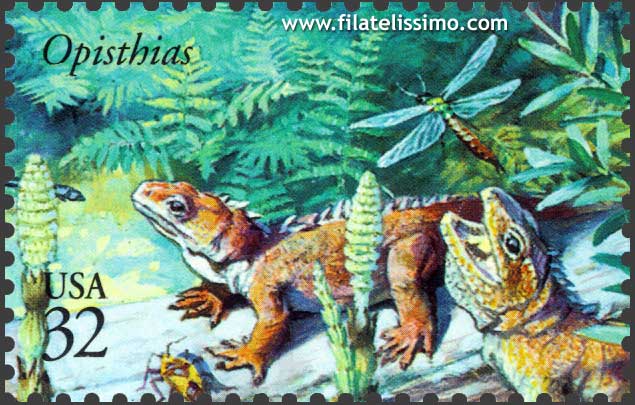 the Morrison Formation and is also known from the Purbeck Formation in England. Theretairus (Simpson 1926) is known from two specimens (the holotype is a single dentary from Como Bluff), although some consider it to be a juvenile form of Opisthias. The larger and more robust Eilenodon was discovered in the Morrison beds of the Fruita Paleo Area, Colorado (Rasmussen and Callison, 1981), and is known known from four new localities in Utah and Colorado. Eilenodon is a member of a group of larger sphenodontians, related to the Early Cretaceous Toxolophosaurus (Montana) and Late Cretaceous Priosphenodon (Argentina).
the Morrison Formation and is also known from the Purbeck Formation in England. Theretairus (Simpson 1926) is known from two specimens (the holotype is a single dentary from Como Bluff), although some consider it to be a juvenile form of Opisthias. The larger and more robust Eilenodon was discovered in the Morrison beds of the Fruita Paleo Area, Colorado (Rasmussen and Callison, 1981), and is known known from four new localities in Utah and Colorado. Eilenodon is a member of a group of larger sphenodontians, related to the Early Cretaceous Toxolophosaurus (Montana) and Late Cretaceous Priosphenodon (Argentina).References: Foster, J.R. 2007. Jurassic West: The dinosaurs of the Morrison Formation and their world. Indiana University Press. 389 pp.
Gilmore, C.W. 1910. A new rhynchocephalian reptile from the Jurassic of Wyoming, with notes on the fauna of "Quarry 9." Proceedings of the United States National Museum 37: 35-42.
Hay, J.M., Subramanian, S., Millar, C.D., Mohandesan, E. and Lambert, D.M. 2008. Rapid molecular evolution in a living fossil. Trends in Genetics 24: 106-109. (http://dx.doi.org/10.1016/j.tig.2007.12.002)
Rasmussen, T.E. and Callison, G. 1981. A new herbivorous sphenodontid (Rhynchocephalia: Reptilia) from the Jurassic of Colorado. Journal of Paleontology 55: 628-634.
Simpson, G.G. 1926. American terrestrial Rhynchocephalia. American Journal of Science 5: 12-16.
*(2008, March 23). New Zealand's 'Living Dinosaur' -- The Tuatara -- Is Surprisingly The Fastest Evolving Animal. ScienceDaily. Retrieved March 23, 2008
images from: iStockphoto/Robyn Grant, http://www.geocities.com/RainForest/6525/tuatara.html & http://www.filatelissimo.com/wp-content/uploads/2007/09/dinosaurios_opisthias.jpg
Sunday, March 23, 2008
Saturday, March 22, 2008
Buffalo Springfield - For What It's Worth
For What It's Worth
Artist: Buffalo Springfield
There's something happening here
What it is ain't exactly clear
There's a man with a gun over there
Telling me I got to beware
I think it's time we stop, children, what's that sound
Everybody look what's going down
There's battle lines being drawn
Nobody's right if everybody's wrong
Young people speaking their minds
Getting so much resistance from behind
I think it's time we stop, hey, what's that sound
Everybody look what's going down
What a field-day for the heat
A thousand people in the street
Singing songs and carrying signs
Mostly say, hooray for our side
It's time we stop, hey, what's that sound
Everybody look what's going down
Paranoia strikes deep
Into your life it will creep
It starts when you're always afraid
You step out of line, the man come and take you away
We better stop, hey, what's that sound
Everybody look what's going down
Stop, hey, what's that sound
Everybody look what's going down
Stop, now, what's that sound
Everybody look what's going down
Stop, children, what's that sound
Everybody look what's going down
Friday, March 21, 2008
The Police - Every Breath You Take

As the "weekend of music" continues, I thought it would be appropriate to include a Police tune and the stalker song is a great one. I got to see these guys in concert this summer and it was amazing how great they still sounds some 20 (25?) years later! It was like they had never been apart! It was really awesome to hear them sing this hit also, it still sounded great! (the photo of Sting's butt was taken with my phone camera through the binoculars. It was awesome.)
Thursday, March 20, 2008
Tom Petty - I Wont Back Down (weekend of music starts)
I Wont Back Down
Lyrics by Artist: Tom Petty
Well I won't back down
No I won't back down
You can stand me up at the gates of hell
But I won't back down
No I'll stand my ground, won't be turned around
And I'll keep this world from draggin me down
gonna stand my ground
... and I won't back down
Chorus:
(I won't back down...)
Hey baby, there ain't no easy way out
(and I won't back down...)
hey I will stand my ground
and I won't back down
Well I know what's right, I got just one life
in a world that keeps on pushin me around
but I'll stand my ground
...and I won't back down
(I won't back down...)
Hey baby, there ain't no easy way out
(and I won't back down...)
hey I will stand my ground
(I won't back down)
and I won't back down...
(I won't back down...)
Hey baby, there ain't no easy way out
(I won't back down)
hey I won't back down
(and I won't back down)
hey baby, there ain't no easy way out
(and I won't back down)
hey I will stand my ground
(and I won't back down)
and I won't back down
(I won't back down)
No I won't back down...
Check out the the video with The Beatles' Ringo Starr on drums and George Harrison on guitar. It also featured ELO frontman Jeff Lynne on guitar. Its almost like having the Traveling Wilburys together!
Geological Definition of the Day (#4)
diluvium (di-lu'-vi-um) 1. An archaic term once applied to widespread surficial deposits that were believed to be produced by extraordinary floods of vast extent, esp. the Noachian Flood; these deposits are now known to be mostly glacial drift. 2. A general term used in continental Europe for Pleistocene glacial deposits, as distinguished from younger alluvium. (page 141)
"Along the western base the range diluvium is accumulated in large quantities but in general this formation is not as abundant to the west as to the east of Connecticut river." [link]
From Bates, R.L. and J.A. Jackson. 1984. Dictionary of Geologic Terms. American Geological Institute.
Wednesday, March 19, 2008
OMG: They have made the nightly news!
During Private Museum Tours, Denver Children Learn About Creationism
March 19, 2008
Standing in the lobby of the Denver Museum of Nature & Science, Bill Jack and Rusty Carter pointed to the enormous teeth on the reproduced skeleton of a Tyrannosaurs Rex, and told a group of children and their parents that the fearsome T-Rex was really a vegetarian.
They said the T-Rex was vegetarian because at the time of the Creation, there was no such thing as death, so a T-Rex could not have eaten meat. There was no death until Adam and Eve ate forbidden fruit from the tree of knowledge, they continued, and God's revenge was to curse the world with death.
Jack asked, "If this creature was designed to eat meat from the very start, what would he have to do until Adam and Eve sinned and death entered the world? What would he have to do?" The children replied in chorus, "Starve."
"Fast and pray for The Fall. Is that likely?" Jack asked. "The answer is, everyone look at me and say, 'No.' Try that with me.'"
"No!" the children replied.
Anyone who knows me well knows that I was brought up in a very Southern Baptist home (my dad is still a pastor) and I was taught this stuff (Creationism ) early on too. As I got older I was able to look around and see what is in front of me and make my own decisions as to how things happened. No one brain washed me. No one tried to convert me. Heck, I don't think I ever even heard the word 'evolution' till I was in middle school. I did it all on my own just by looking at the earth around me and saying "how can this be." I hope those kids will do the same someday and stop following the herd. Way to go Kurt Johnson, btw, for presenting the other side.
.
Geological Definition of the Day (#3)
cactolith: a quasihorizontal chonolith composed of anastomosing ductoliths whose distal ends curl like a harpolith, thin like a sphenolith, or bulge discordantly like an akmolith or ethmolith.
From the paper: Hunt, C.B. 1953. Geology and geography of the Henry Mountains region, Utah.
Unfortunately I do not have the dictionary from whence it came, so I had to google it. Risky, I know. But this is one I could never forget. Wikipedia has an interesting blurb about it: "Whilst he was in fact describing an actual geological feature - a laccolith which he saw as resembling a cactus [1] - he was also, tongue-in-cheek, commenting on what he saw as an absurd number of "-lith" words in the field of Geology." But it is Wikipedia after all, so take the story as you like.
Tuesday, March 18, 2008
Science Diversity Meme - Women Scientists
I figure this should be easy enough:
Of course Biology/Biomedical/Geology/Paleontology come to mind first:
1. Cathy Forster
2. Karen Chin
3. Frankie Jackson
4. Brenda Chinnery-Allgeier
5. Eva B. Koppelhus
but heck, why stop there...
6. Mary Dawson
7. Kay Behrensmeyer
8. Linda Deck
9. Penny Higgins
10. Joanna Wright
11. Kristie Curry-Rogers
12. Blaire Van Valkenburgh
13. Julia Sankey
14. Zofia Kielan-Jaworowska
15. Jessica Theodor
16. Anne Weil
17. Darla Zelenitsky
18. Emily Rayfield
19. Caroline Stromberg
20. Alison Murray
21. Kelli Trujillo
22. Julia Clarke
23. Mary Schweitzer
24. Halszka Osmolska
25. Anjali Goswami
26. Karen Sears
27. Cara Burres-Jones
28. Jaelyn Eberle
29. Annalisa Berta
30. Catherine Badgley
'Just' Geology:
1. Peggie Guccione
2. Pam Jansma
3. Moira Ridley
'Just' Biology:
1. Diana Fosse
2. Jane Goodall
Biochemistry
1. Pam Trotter
Geography:
1. Jennifer Horwath
2. Fiona Davidson
And those are just the ones I can think of off the top of my head, who have Ph.D.'s. If you toss in all the awesome chicks that work in museums, colleges and prep that just do not happen to have a Ph.D. I am sure I could find just as many :)
I'll admit that John helped me with some of the names and spellings. The meme also asked for info, hence all the links.
Can you think of any I am missing? I know there have to be more that I am just forgetting.
.
Switching Gears w/ Junior on tomorrow!

I just wanted to remind everyone that John's radio show "Switching Gears w/ Junior" is on tomorrow night (Wednesday, March 19) from 9-12pm Mountain time. "Turn on, tune in, drop out" for a few hours ;) You can see last weeks playlist here, and the first weeks show here for an idea of what he likes to play. The show is on every other Wednesday.
You can check it out tomorrow (streaming radio) on their website at http://kafmradio.org/
If you are on Facebook, you can join the Switching Gears w/ Junior group! See you there!
Geological Definition of the Day (#2)
blastopsammitic (blas'-to-psam-mit'-ic) Said of the texture of a metamorphosed sandstone that contains relicts of the parent rock. (page 58)
"The quartzite shows granoblastic and blastopsammitic texture, with grain sizes varying from coarse sand to very fine pebble and with minor microcrystals of sericite, fuchsite, andalusite and iron oxide, besides detrital tourmaline, rutile, and zircon." [link]
From Bates, R.L. and J.A. Jackson. 1984. Dictionary of Geologic Terms. American Geological Institute.
Monday, March 17, 2008
Outdoor Performance Clothes - Stuff White People Like
#87 Outdoor Performance Clothes
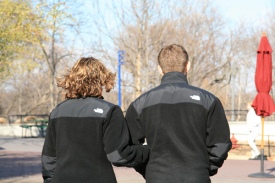 "As white people get older, they like to make clear boundaries between their professional and personal lives. They don’t mind talking about their personal life at work, but they hate talking about their work life when they are enjoying a weekend or vacation. But with blackberries and laptops, white people could be working anywhere, at any time. So how do you know when they are off the clock? It’s easy, check their clothes.
"As white people get older, they like to make clear boundaries between their professional and personal lives. They don’t mind talking about their personal life at work, but they hate talking about their work life when they are enjoying a weekend or vacation. But with blackberries and laptops, white people could be working anywhere, at any time. So how do you know when they are off the clock? It’s easy, check their clothes.When white people aren’t working, they generally like to wear Outdoor Performance Clothes. The top suppliers of these garments and accessories include North Face, REI, Mountain Equipment Co-Op, Columbia Sportswear, and Patagonia.
When you see white people wearing these, it is important that you do not discuss business matters. Instead you should say things like “where did you get that fleece?” and “what’s that thing holding your keys to your shorts?” White people will be more than happy to talk to you about their sustainably produced possessions.
The main reason why white people like these clothes is that it allows them to believe that at any moment they could find themselves with a Thule rack on top of their car headed to a national park. It could be 4:00 p.m. on a Saturday when they might get a call “hey man, you know what we need to do? Kayak then camping, right now. I’m on my way to get you, there is no time to change clothes.”
Also see #81: Graduate School
Geological Definition of the Day (#1)
arthrophycus (ar-thro-phy'-cus) A sand-filled rounded furrow, curving and branching, with faint but regularly spaced transverse ridges commonly bearing a median depression, probably representing a feeding burrow but also variously regarded as an inorganic structure or a trail produced by a worm, mollusk, or arthropod crawling over a soft-mud surface. The "branches" of the trace fossil may reach 60 cm in length. It was originally described as a plant fossil (seaweed) and assigned to the genus Arthrophycus. (page 29)
"Arthrophycus and other trace fossils in the Red Mountain Formation form a group related by interconnection, intergradation, similar dimensions, and morphologic similarities that, taken together, strongly suggest a common tracemaker." [link]
*Bates, R.L. and J.A. Jackson. 1984. Dictionary of Geologic Terms. American Geological Institute.
Meet the Phlockers
 Jimmy Buffett has also now made official history, having been made fun of on South Park! Watch the video here.
Jimmy Buffett has also now made official history, having been made fun of on South Park! Watch the video here.
Sunday, March 16, 2008
Guess what, I have opinions, and you do not have to like them.
I am not here to please anyone other than myself. This is solely an outlet for me to have fun, post what is on my mind, and bring things to others attention if I think it is worth while for people to know about. I should not have to hide in the dark or stick my head in the sand. I should not have to wonder when I am going to get a call telling to go get a lawyer. I should not have to wonder if the fact that I have opinions will ruin what little career I have. I should not have to fear those around me and their actions towards me should I happen to have an opinion that differs from the one they have.
I am a person too. I have opinions. You may not like them, but they are my own and I can have them. I do not appreciate having to moderate myself or constantly check to see who is watching me and what they are up to! The world is not a cohesive group of people who agree with each other. That is especially true for paleontologist. Deal with it. Just because someone does not like the actions that are being take does not mean they are wrong. As a tax payer and US citizen, I have the right to say whatever I damn please on my own blog as long as I am not liable anyone else. And I have not. I may not agree with you, but welcome to the good old US of A where I can say I DO NOT AGREE WITH YOU! and not have to worry about you trying to bring me down because of that.
If you read my blog you are subject to my opinions.
Edit: I have had to take down my personal website also for the time being. I felt as though something that are somewhat private (such as my wedding plans for example) were being viewed by people who have no business looking at them. They were private (or so I thought, they are now, and only available to the invited parties). I am very fearful of retaliation from certain parties, hence my vagueness here. I apologize for my rantings, I just want this person to know how they are making me feel, and that it is wrong. I should not have to be afraid for voicing my opinions, whether they are about Aetogate, the Dinosaur National Monument job cuts, politics and the upcoming elections, or if I should eat turkey or ham for lunch, it should not matter. They are my opinions, and I am allowed to have them. Younger members of a profession should not be made fearful for voicing their opinions because a senior member of that profession does not agree with them.
Edit edit: Oddly enough, this person is STILL trying to access my website, googling the heck out of things like "dinochick" ect.... Whats the big freakin deal buddy!! Are you afraid I have created a club for all of those that do not agree with you to hang out on. Maybe I am not the one who is overly paranoid here.......
.
Saturday, March 15, 2008
Fossil Preparation and Collections Symposium
A Fossil Preparation and Collections Symposium will be held at Petrified Forest National Park near Holbrook, Arizona from April 10-12, 2008.
Petrified Forest National Park was established in 1906 to protect petrified wood and other fossils from the Upper Triassic Chinle Formation in northeastern Arizona. These fossils have been researched for over 100 years resulting in the publication of hundreds of papers, forming a cornerstone for Late Triassic paleontological studies in North America.
Registration Fee: $65. Covers all events and includes a copy of proceedings volume.
Symposium Papers and Workshops:
Participants will have a choice of two of the following workshops:
- Introduction to molding and casting of museum objects
- Welding for mounted specimens and armatures
- Roundtable discussion on publication and building the preparation literature
- 3D visualization of collections using laser scanning equipment and software
Click here for a list of talks/posters
Conference Events
| April 10 | Paleontological Resources field trip |
| Evening: Welcome Reception in Holbrook, Arizona | |
| April 11 | Preparation and Collections Symposium, Petrified Forest National Park |
| Evening: BBQ Social, Petrified Forest National Park | |
| April 12 | Choice of Morning and Afternoon Workshops |
| Evening: Dinner Reception, Holbrook, Arizona |
For more information contact:
Matthew Brown
Fossil Preparator
Phone: 928-524-6228 ext. 281
or
William Parker
Park Paleontologist
Phone: 928-524-6228 ext. 262
Petrified Forest National Park
PO Box 2217
Petrified Forest, AZ 86028
Fax: 928-524-3567
Friday, March 14, 2008
Upheaval Dome, Utah, USA: Impact origin confirmed
 Two German researchers claimed in the months "Geology*"that they have found the evidence that proves Upheaval Dome in Canyonlands National Park was formed by a meteor. The quartz grains were found "off to the side of the crater, not in the middle, a finding that suggests the meteor collided at an angle." [link] The quart was actually found in the Jurassic Kayenta Formation! It has long been debated that this structure was possibly caused by a collapsed salt dome, volcanism or a meteor.
Two German researchers claimed in the months "Geology*"that they have found the evidence that proves Upheaval Dome in Canyonlands National Park was formed by a meteor. The quartz grains were found "off to the side of the crater, not in the middle, a finding that suggests the meteor collided at an angle." [link] The quart was actually found in the Jurassic Kayenta Formation! It has long been debated that this structure was possibly caused by a collapsed salt dome, volcanism or a meteor.This is definitely worth seeing if you are ever in Canyonlands and have the time to hike up to the site (its only about a mile hike). John and I went and visited it for the first time this past summer and it was definitely very cool to see in person! Highly recommended! Besides, Canyonlands is an awesome park that you should visit if you are ever in Utah!

*Elmar Buchner and Thomas Kenkmann. 2008. Upheaval Dome, Utah, USA: Impact origin confirmed. Geology 36(3): 227-230. [link]
Canyonlands Official Upheaval Dome webpage
National Parks Traveler article
Discovery News: Utah Crater Mystery Cracked

Thursday, March 13, 2008
Stat Counter
A few quick shout-outs:
Hi Tom ;) Thanks for coming by!!
Thanks to the person from Roosevelt, Utah! You come by often, I appreciate it. (Hi Dan)
Todays international readers from Sweden, New Zealand, Italy, Alberta, Brazil, Portugal, Ottawa, Hungary, Ontario, United Kingdom, Germany, Belgium and Australia!
Hello National Park Service people! Thanks for reading! Hope you find a few of the stories here interesting. Please help!
USGS person in Colorado - Hi! ;)
Please, feel free to leave some comments and say hello. Introduce yourself! I appreciate your interest!!
Two new Taphonomy papers
Lauters, Pascaline, Yuri L. Bolotsky, Jimmy Van Itterbeeck, and Pascal Godefroit. 2008. Taphonomy and Age Profile of a Latest Cretaceous Dinosaur Bone Bed in Far Eastern Russia. Palaios 23(3): 153-162. [link]
Abstract: A large dinosaur bone bed has been investigated in the Udurchukan Formation (?late Maastrichtian) at Blagoveschensk, Far Eastern Russia. The observed mixture of unstratified fine and coarse sediments in the bone bed is typical for sediment-gravity-flow deposits. It is postulated that sediment gravity flows, originating from the uplifted areas at the borders of the Zeya-Bureya Basin, reworked the dinosaur bones and teeth as a monodominant bone bed. Fossils of the lambeosaurine Amurosaurus riabinini form >90% of the recovered material. The low number of associated skeletal elements at Blagoveschensk indicates that the carcasses were disarticulated well before reworking. Although shed theropod teeth have been found in the bone bed, Amurosaurus fossil assemblage. It is tentatively postulated that the absence of fossils attributable to nestling or early juvenile individuals indicates that younger animals were segregated from adults and could join the herd only when they reached half of the adult size.
Tapanila, Leif, Eric M. Roberts, Mohamed L. Bouaré, Famory Sissoko, and Maureen A. O'Leary. Phosphate Taphonomy of Bone and Coprolite Conglomerates: A Case Study from the Eocene of Mali, NW Africa. Palaios 23(3): 139–152. [link]
Abstract: Repeated sequences of carbonate and shale are punctuated by condensed sections of phosphatic conglomerate in the epeiric deposits of the Trans-Saharan Seaway in northeastern Mali. To characterize the taphonomic and depositional setting of these phosphates, a thick Eocene conglomerate from the area of Tamaguélelt was targeted for quantitative analysis. Systematic grid sampling demonstrates that nearly all of the clasts are derived from vertebrate sources (bones = 27%, coprolites = 20%, probable coprolites = 53%), and invertebrate body fossils are nearly absent. Bony and cartilaginous fish dominate the bone assemblage, which also includes minor reptilian elements from sea turtles, sea snakes, and dyrosaurid crocodilians. Coprolites are of five distinct varieties, including three spiral forms probably produced by separate fish taxa. Repeated episodes of abrasion and minor bioerosion with modest levels of sorting characterize the taphonomy of the phosphate conglomerate and are consistent with a shallow-marine-to-brackish-water depositional environment between fair-weather and storm-wave base. Early phosphogenesis strongly favored the preservation and lithification of phosphate-rich bones and coprolites, probably during periods of marine transgression and sediment starvation. Combined with evidence from sedimentology, these vertebrate-dominated fossil assemblages appear extensively reworked and highly time averaged as a result of amalgamation and concentration by storm activity during periods of marine transgression.
Wednesday, March 12, 2008
Cuckoo Bags. Very handmade.
 Check out these awesome hand made bags. A friends wife from back in Arkansas makes these:
Check out these awesome hand made bags. A friends wife from back in Arkansas makes these:"Reconstructed eco bags and totes. Most fully reversible and built from natural fibered vintage textiles. Cotton, linen, wool. Wool felt and old button decoration. 100% thrifted sources for textiles. I would love it if my bags were all sort of sadly beautiful. Like maybe a cross between Grey Gardens and Rebecca of Sunnybrook Farm. Cuckoo Bags. Very handmade."

Tuesday, March 11, 2008
Some fun Indiana Jones Trivia
Actor Dan Aykroyd has a cameo role in the Temple of Doom. Indiana Jones meets his character at the airport at the end of the Shanghai car chase. You won't be able to get a good look at his face but you'll certainly recognize his voice....

While filming the whipping scene in Temple of Doom, the crew played a practical joke on Harrison Ford. Chained to a large stone, Barbra Streisand appeared, dressed in a leather dominatrix outfit. She proceeded to whip him, saying "That's for Hanover Street, the worst movie I ever saw." She continued whipping him for Star Wars, and making all of that money. Carrie Fisher then threw herself in front of Ford to protect him, and Irvin Kershner chided director Steven Spielberg. "Is this how you run your movies?" It's rumored that this entire sequence was filmed.

And for a few more Star Wars/Indiana Jones tie-ins:
The scene where Indy threatens to blow up the Ark with a bazooka, as it is being carried through a canyon, was filmed in the exact same canyon in Tunisia used in Star Wars Episode IV: A New Hope when R2-D2 was zapped and stolen by Jawas.

Jock's airplane at the beginning of the film has the registration number 'OB-CPO', referring to characters Obi-Wan Kenobi and C-3PO from the Star Wars films.

Probably the most well known: The hieroglyphics in the Well of Souls include engravings of R2-D2 and C-3PO. They can be seen on a post to the right of Indy and Sallah as they remove the Ark (to the left in this picture).
The club at the beginning is called "Club Obi Wan", a reference to Star Wars character Obi-Wan Kenobi.
And check out the very cool new poster for Indiana Jones and the Kingdom of the Crystal Skull designed by Drew Struzan!
 Hurry up May 22!!
Hurry up May 22!!Trivia Link: Temple of Doom & Raiders
Gujarat: the Jurassic Park of India
By Azera Rahman. India, 10:31 AM IST
It's more than raw beauty that captivates your interest as you drive uphill on the black hills of Kala Dungar, a good 120 km from the nearest town of Bhuj in western India. The place, at 1,800 feet above sea level, has become a hunting ground for archaeologists (? ReBecca - I guess they meant paleontologist) who have discovered the fossils of dinosaurs here, leading them to call it the Jurassic belt.
With the endlessly white desert of the Rann of Kutch beneath, these hills, made up typically of sugar cube look-alike rocks, are a treasury of the earth's past. Plans are now on to develop the place into a dinosaur fossil park very soon.
Atanu Chakrabarty, secretary of the state's tourism and small scale industries department, said that a number of dinosaur fossils have been found in this region which have been authenticated by the Geological Survey of India (GSI) and the Zoological Survey of India (ZSI).
'The fossilised eggs of dinosaurs and the fossils of their body remains embedded in rocks have been discovered in the hills of Kala Dungar which have been authenticated by the GSI and ZSI officials,' Chakrabarty told IANS.
'It's a treasury of fossils dating back to 65 million years ago, when dinosaurs became extinct from the face of the earth. Plans, still at a preliminary stage, are now on to develop the place into a dinosaur fossil park.'
Talks are on to decide on making available Rs.120 million for the park....
'Some of the fossils have been collected and put together in a private museum by Narendra Singh Soda, a Pakistani who came and settled in India and has a keen interest in the subject.
'Fossilised dinosaur eggs, some the size of a canon ball, and rocks with the imprints of body remains of dinosaurs are part of his collection,' Vittal said.
This is, however, not the first time that fossils of dinosaurs have been discovered in Gujarat.
Rahioli near Balasinore, which is around 90 km from Ahmedabad, is being developed into a dinosaur fossil park and is believed to have been one of the biggest hatcheries of dinosaurs in the world during the Jurassic era....
'All knowledge about these giant creatures, which became extinct 65 million years ago, has to be built on the basis of fossils embedded in rocks and India constitutes part of the cluster of the same continent - the Gondwana land about 250 million years ago when dinosaurs evolved on earth,' he said.
The Indroda Dinosaur and Fossil Park in Gandhinagar has the second largest hatchery of dinosaur eggs in the world. It was set up by the Geological Survey of India and is the only dinosaur museum in the country.
'Gujarat is one of the few states in India which has a such a huge wealth of fossilised dinosaur remains. We are doing everything possible to protect this wealth,' Chakrabarty said.
Read the entire article here.....
Saturday, March 8, 2008
Of Geologists, Paleontologists, And Science in the National Park System
"And now core ops is overhauling -- some might say dismantling -- the staff at Dinosaur National Monument by doing away with staff and outsourcing research. Superintendent Risser says a core ops analysis led to her decision to do away with two of the three individuals in the monument's paleontology division. That decision has led folks to pillory both Superintendent Risser and Dan Chure, the staff paleontologist left on board. The heated debate, captured in the comments to previous Traveler posts on the matter, have been highly emotional, spawned some personal attacks, and at times taken on a "he said, (s)he said" diatribe.
Already the core ops process has slimmed down other divisions at Dinosaur, cutting roughly $700,000 from Superintendent Risser's budget, and the additional two positions identified to be eliminated from the paleontology division should save about another $200,000, when benefits are factored in. Some of that savings, the superintendent tells me, will pay for more research in the monument via the Cooperative Ecosystem Study Unit system the Park Service created with universities around the country.
"What we've found is that one dollar put into a CESU gets us $32 in research. Putting some money aside, putting it into an agreement with a university, we can generate much, much more research than we would just through staff personnel," says Superintendent Risser.
Too, the monument needs to invest in more than just paleontology, she says, pointing to fisheries research, river research, botany, resource protection and on and on. And with incredibly tight budgets, the park has to make concessions, according to the superintendent. Already many of the staff are doing two jobs, and obvious savings no longer exist.
"I completely understand the frustration of being told your job is going away," says Superintendent Risser. "I understand that completely. I can imagine how hard that is to hear, because I know how hard it was to tell people that. It's not something I wanted to do. That's not why I got into the Park Service.
"... We truly aren't the heartless people that we come across as being," the superintendent says....
To Dr. Soukup, who set up the CESU program, trimming Dinosaur's paleontology division to one person who will oversee outside researchers will not allow that vision to come to fruition.
"The job of assembling and making sense and building that knowledge base over time is not going to be done by professors who come and go and researchers that are project-oriented," he says. "You’ve got to have people on site for good parts of their career, really digesting and assimilating and translating all of the information into a usable body of science that you can take to the daily management of the park. If you short-change that, you’re never going to become really careful, thoughtful, and knowledgeable enough I think to really manage well.”
While Dr. Soukup sympathizes with Superintendent Risser's fiscal plight and the added responsibilities the monument has taken on as it has grown from an 80-acre reservation dedicated entirely to fossils to more than 200,000 acres with a range of resource issues, he believes the Park Service should respond not by whittling away and outsourcing science but by responding with financial resources.
"I would argue that the Park Service budget is not where it should be and it’s really suffered in the last five or six or seven years because the cost-of-living increases and the fixed costs have not been budgeted. It’s been sort of a starvation period for parks, and a lot of parks have had to cut back," he says, adding that the agency's interpretive division has suffered greatly...."
Be sure to check the entire article out.


